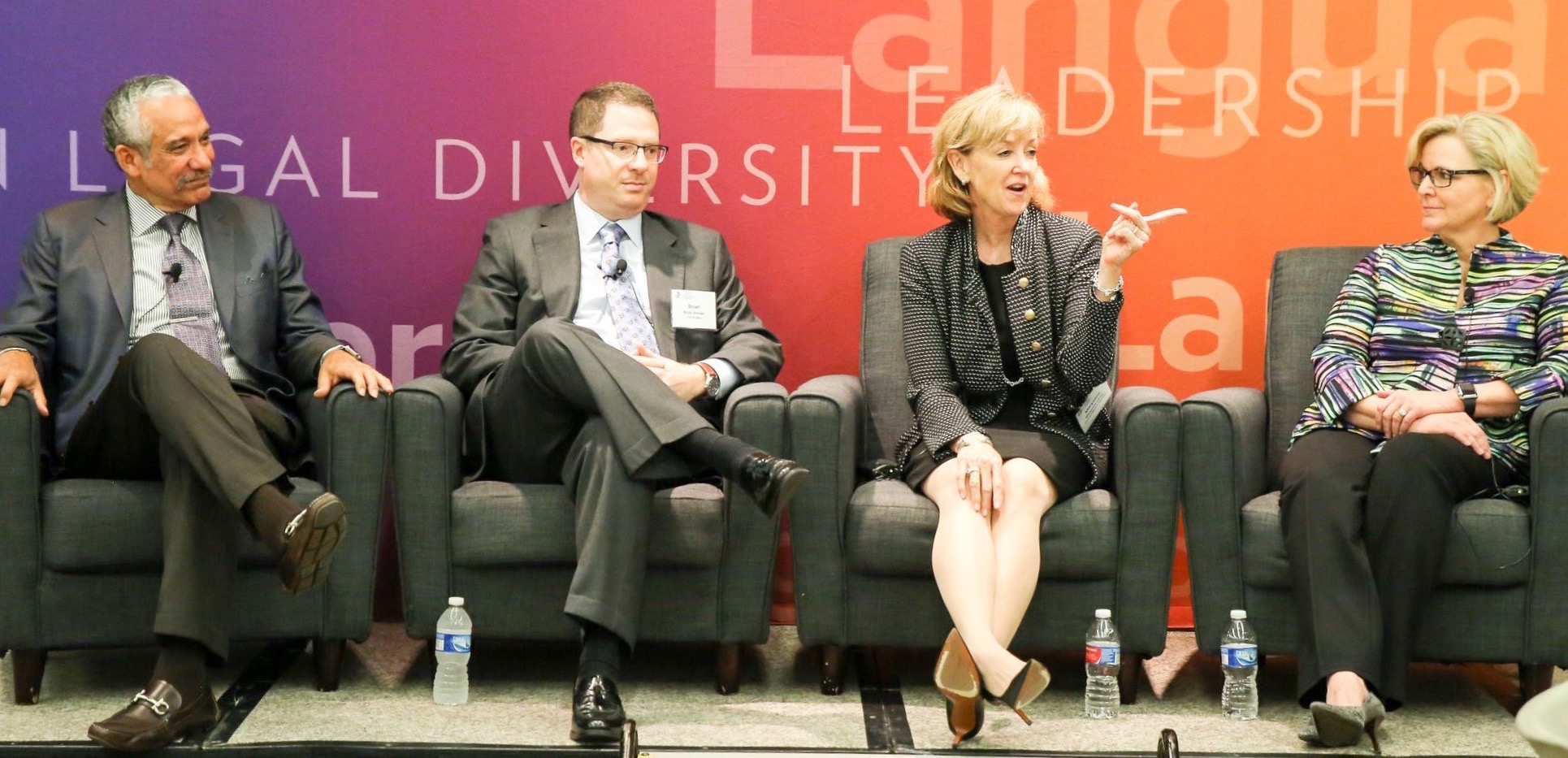Sustainable Partnerships is a collaborative effort from LCLD Members to help women and minority lawyers develop the self-sustaining practices necessary for equity partnership.
Between 1993 and 2017, the percentage of minority senior-level law firm associates grew from 8 percent to more than 23 percent. But the needle moved far less for law firm partners over the same period of time—from 2.6 percent to just 8.4 percent.
“We have solid proportions of minority associates, but we have made no progress in improving the diversity of the firms’ power structure,” Brian Brooks, LCLD Member and former General Counsel at Fannie Mae, told a group of LCLD Members earlier this year. “We have a problem of ‘stickiness,’ of sustainability.”
Brooks and his colleague Kenny Perry, a 2012 Fellow and Deputy General Counsel at Fannie Mae, used their LCLD network to come up with ideas about how they could work together with law firms to address the “stickiness” problem.
“Once diverse attorneys make partner, it can be difficult for them to build a successful practice if they lack relationships and access to potential clients,” Perry said. “That’s something engaged corporate legal departments can help improve.”
Sustainable Partnerships was designed to address those challenges. See below for guidelines on creating your own program.

Creating a Sustainable Partnership Program
1. Get buy-in from local leaders.
In addition to Brooks, LCLD Members Maryanne Lavan (Lockheed Martin Corporation), Cynthia Gibson (Scripps Networks Interactive), Ian Graham (BAE Systems), and Ben Wilson (Beveridge & Diamond PC) made a personal commitment to participate in the program. They attended large group meetings, shared advice and knowledge, and connected with program participants.
2. Activate regional Fellows network.
The Fellows Alumni network provides a ready subset of over 750 diverse law firm attorneys. Brooks and his colleagues determined that for the program to be successful on a small scale, it needed to be regional—so they invited Washington, D.C.-area Fellows Alumni who had been elected to partnership in the last six years to participate.
3. Identify critical skills.
Program participants had three meetings over the course of the year, each of which addressed a major obstacle to successful partnership:
- Sharpening the Focus: Leaders shared insights into the critical need to hone networking skills and establish internal and external relationships that build trust and a solid book of business.
- Understanding the Business: Experts shed light on law firm management secrets, such as how relationship partners are selected and how origination credit is assigned.
- Making the Sale: Fellows practiced pitches for in-house leaders and received feedback from in-house counsel.
4. Ensure access to decision makers.
To help participants further develop relationships with in-house counsel, Fellows were matched 3:1 with an in-house advisor, typically a ranking member of the legal department responsible for outside counsel hiring decisions. Advisors were selected for their desire to develop deeper relationships with outside counsel, and agreed to meet with their Fellows once per quarter.
5. Measure results.
Brooks said he hopes future iterations of the program will lead to changes in law firm retention, diverse partners’ shares, and diverse partners in leadership roles. Here’s another metric: as of 2018, there are over 1,300 Fellows Alumni—how much would the legal profession change if all of them had access to a program like this?
A second iteration of Sustainable Partnerships is currently underway in the Bay Area, hosted by LCLD Member organizations The Clorox Company, Coinbase, and HP Inc.
For more information on Sustainable Partnerships, contact Erin Hess at ehess@lcldnet.com.
Resources:
- Meeting Agendas: First | Second | Third
- Sustainable Partnerships: An Idea Worth Repeating


